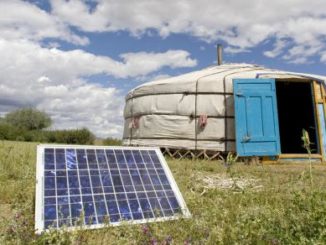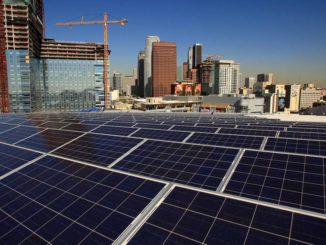
Move by CEFC designed to drive emissions reductions across Australia’s airports, ports and electricity infrastructure assets
The Clean Energy Finance Corporation is investing $150m in Australia’s largest infrastructure fund to drive emissions reduction across some of Australia’s biggest airports, ports and electricity infrastructure assets.
It is the first time the CEFC has invested in an infrastructure fund, and it is using the investment to target emissions reduction at Melbourne and Brisbane airports, Sydney’s Port Botany, the Port of Brisbane and Ausgrid.
It estimates that a 5% improvement in emissions from those assets would abate almost 69,000 tonnes of CO2 equivalent annually, equivalent to removing 14,775 cars from the road each year, or providing electricity to roughly 7,450 homes a year.
Infrastructure-related emissions account for more than half of Australia’s total greenhouse gas emissions, mainly from the electricity sector (35%) and the transport sector (18%), according to the National Greenhouse Gas Inventory.
The CEFC is a specialist clean energy financier charged with increasing the flow of finance into renewable energy, energy efficiency and low-emissions technologies.
Ian Learmonth, the CEFC chief executive, said the $150m investment in IFM Investors’ managed IFM Australian Infrastructure Fund – a $12bn fund – would deliver significant emissions reductions in the infrastructure assets that would benefit the communities they serve and superannuation member returns.
“Infrastructure assets are central to our economic and social wellbeing,” he said in a statement.
“With this investment the CEFC will work with IFM Investors in targeting comprehensive and sustained improvements to the carbon footprint of some of our most important infrastructure assets.”
IFM Investors is owned by 27 of Australia’s industry super funds and invests on behalf of 6 million Australians and roughly 15 million pension fund members globally. It was started 20 years ago and now has $100bn under management.
Kyle Mangini, IFM Investors’ global head of infrastructure, said the changes would be driven through the boardrooms of the companies.
“We’re represented on the boards, so we’ll propose to the board and the other investors the various programs that might be implemented across each one of the assets,” he said.
“They’re going to need to work on a cost-and-return basis, but it will be done through the typical governance process. We’ll be ensuring there’s a consistent and appropriate level of focus on [emissions reduction].”
CEFC’s infrastructure lead, Julia Hinwood, said emissions reductions initiatives that would be pursued could include installing on-site solar panels and battery storage solutions, and converting to electric vehicles.
“They are also likely to involve using smart management systems, which monitor asset performance and assist with reducing energy consumption and optimising logistics and supply chains,” she said.
Mangini said IFM Investors had set emissions targets for the assets it invested in, and it hoped to be publicly reporting the level of emissions from each of the assets in its Australian portfolio within a year.
“We’d already undertaken a baseline study of all of our assets across the portfolio,” he said.
“We will report on a new website the emissions from each of the assets in our Australian portfolio, the targets we’re setting, the progress we’ve made against those targets, with the objective to hold ourselves accountable in a very transparent manner.”
Source: https://www.theguardian.com/environment/energy
Visits: 74




Be the first to comment